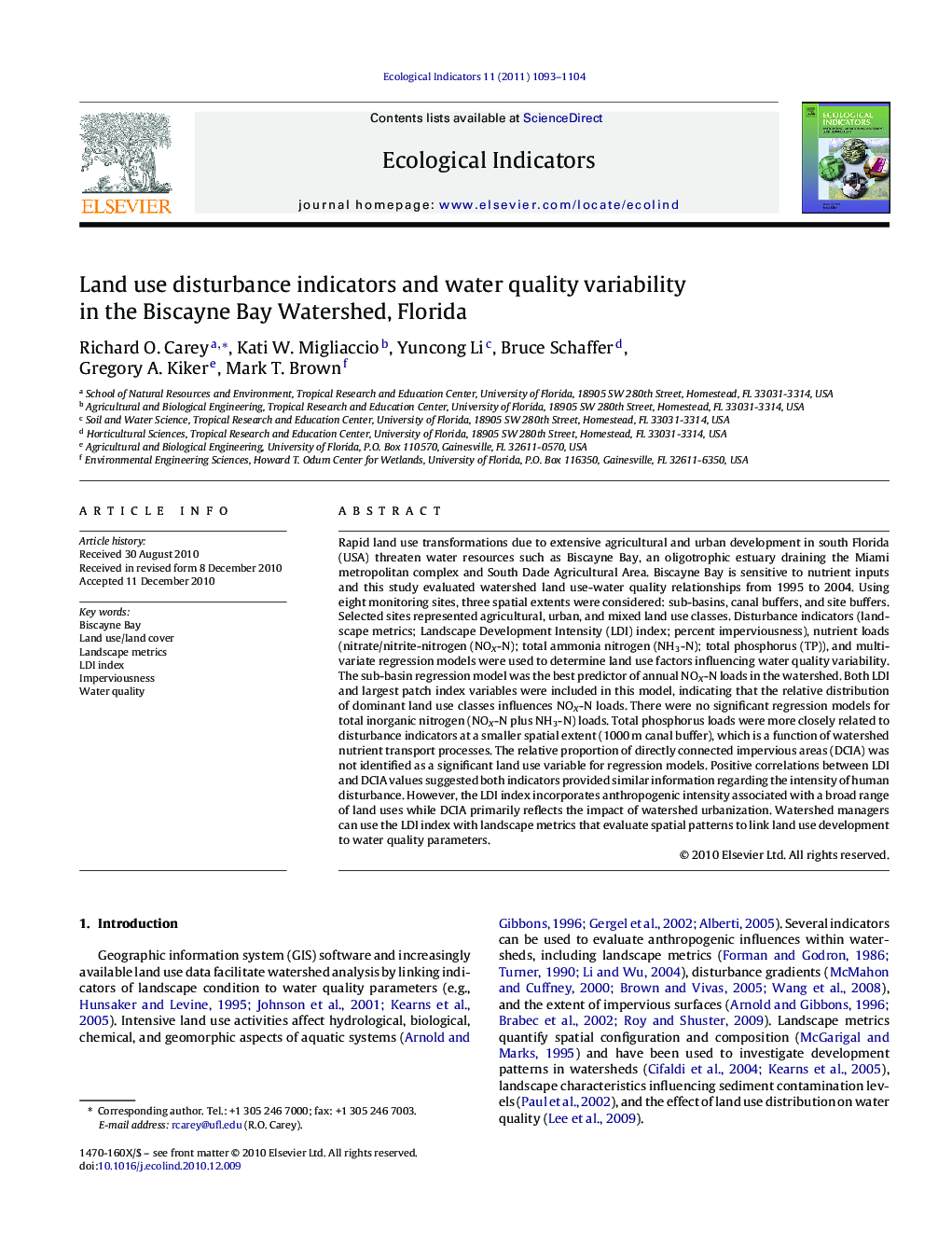| Article ID | Journal | Published Year | Pages | File Type |
|---|---|---|---|---|
| 4374044 | Ecological Indicators | 2011 | 12 Pages |
Abstract
Rapid land use transformations due to extensive agricultural and urban development in south Florida (USA) threaten water resources such as Biscayne Bay, an oligotrophic estuary draining the Miami metropolitan complex and South Dade Agricultural Area. Biscayne Bay is sensitive to nutrient inputs and this study evaluated watershed land use-water quality relationships from 1995 to 2004. Using eight monitoring sites, three spatial extents were considered: sub-basins, canal buffers, and site buffers. Selected sites represented agricultural, urban, and mixed land use classes. Disturbance indicators (landscape metrics; Landscape Development Intensity (LDI) index; percent imperviousness), nutrient loads (nitrate/nitrite-nitrogen (NOX-N); total ammonia nitrogen (NH3-N); total phosphorus (TP)), and multivariate regression models were used to determine land use factors influencing water quality variability. The sub-basin regression model was the best predictor of annual NOX-N loads in the watershed. Both LDI and largest patch index variables were included in this model, indicating that the relative distribution of dominant land use classes influences NOX-N loads. There were no significant regression models for total inorganic nitrogen (NOX-N plus NH3-N) loads. Total phosphorus loads were more closely related to disturbance indicators at a smaller spatial extent (1000Â m canal buffer), which is a function of watershed nutrient transport processes. The relative proportion of directly connected impervious areas (DCIA) was not identified as a significant land use variable for regression models. Positive correlations between LDI and DCIA values suggested both indicators provided similar information regarding the intensity of human disturbance. However, the LDI index incorporates anthropogenic intensity associated with a broad range of land uses while DCIA primarily reflects the impact of watershed urbanization. Watershed managers can use the LDI index with landscape metrics that evaluate spatial patterns to link land use development to water quality parameters.
Related Topics
Life Sciences
Agricultural and Biological Sciences
Ecology, Evolution, Behavior and Systematics
Authors
Richard O. Carey, Kati W. Migliaccio, Yuncong Li, Bruce Schaffer, Gregory A. Kiker, Mark T. Brown,
